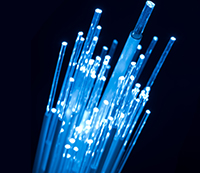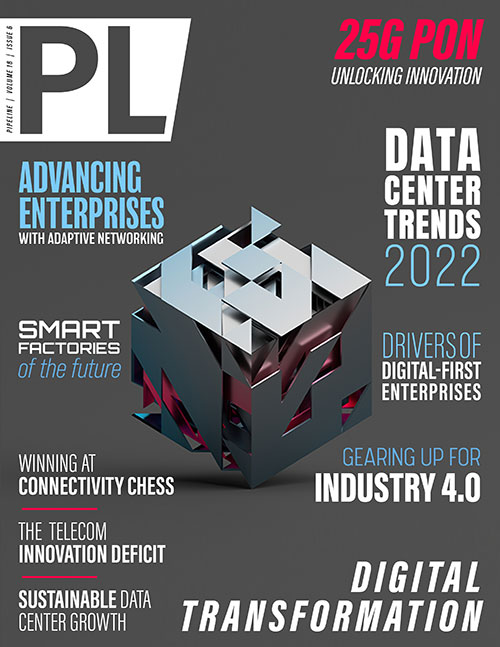Unlocking Innovation in Fiber: The Future is 25G PON
By: David Eckard

In today’s increasingly digital world, fiber broadband is more important than ever. It delivered the high-speed connectivity that was required for our pandemic shift to home offices, remote learning and keeping in touch with our loved ones. Yet as we emerge from this period, the need for increased speeds and capacity continues to grow unabated, fueled by new immersive consumer applications for the spatial web as well as new network functions and architectures such as edge computing and mobile densification.
Built upon the successes of GPON and now XGS-PON, operators are focusing on ways to further leverage their existing fiber deployments and to drive new investment. This article explores three aspects of how 25GPON is fueling innovation—technology, operations, and services—and how it is changing service providers’ business models with a unified fiber infrastructure.
Technology innovations
Fiber to the Home (FTTH) has been an incredible success in delivering a seemingly infinite amount of capacity for customers’ existing services and for the next “killer” application. What has made the fiber access market successful is that the technology has delivered a scalable high-performing means of communications at the right price point. During this journey, we have relied on many enabling technology innovations such as the burst mode receiver and the various forms of amplification to bring consumer fiber access into the mainstream. However, what has been just as important is that during this time there have been many small and even imperceptible advances in disparate industries that, when brought together, drive new innovations that have enabled the market to achieve scale and mass adoption.
Generally, optics are the largest percentage of the cost for access equipment, especially at the customer premise. Over the past several decades of boom and bust in the optical component business, a healthy ecosystem developed, which has shipped hundreds of millions if not billions of optical components. From the earliest days of GPON we have refined the performance of those subcomponents to be able to achieve higher and higher line rates. It is this simple tweaking of the fundamental recipes and the imperceptible innovations in manufacturability and testability that have brought us the most gain.
As we look to address the next frontiers of fiber access, we are tempted to leverage technology beyond the access domain that drives additional levels of complexity into the modules. In the recent past, we have learned the hard lesson of adding too much complexity to these optical modules to meet the perceived needs of the industry. These technologies required all-new ecosystems of components and tighter operational parameters that in the end drove up the costs of the solution and prevented widespread adoption. We see the same scenario potentially occurring with other next-generation PON technologies, as they require additional complexity and thereby higher cost by introducing digital signal processors (DSPs) as well as coherent components in the access space.
During the past few decades, the success of TDM-PON depended on the pre-existence of mature optical and electronic technologies deployed in transport systems. Volumes of these technologies drove price erosion, enabling their adoption and widespread fiber-to-the-home development. Therefore, the pragmatic way forward is to continue to implement incremental innovation for the existing optical modules as demonstrated by the simple low-cost and low-risk progression from the GPON optical modules of today to XGS-PON. However, 25G PON is using an innovative approach, leveraging another industry that nowadays is driving significant optical volumes: data centers. The data center business is now driving the volume worldwide, and 25 Gbps channels have been massively deployed for intra-data center connectivity. 25G PON is leveraging this mature ecosystem and the huge volumes of these existing optical technologies deployed in data centers to achieve cost efficiency. All this is being brought to the market with coexistence so there are no changes required to the network to deploy these multi-generational technologies simultaneously.


















